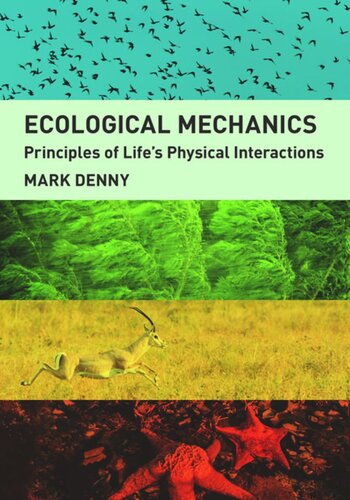

Most ebook files are in PDF format, so you can easily read them using various software such as Foxit Reader or directly on the Google Chrome browser.
Some ebook files are released by publishers in other formats such as .awz, .mobi, .epub, .fb2, etc. You may need to install specific software to read these formats on mobile/PC, such as Calibre.
Please read the tutorial at this link: https://ebookbell.com/faq
We offer FREE conversion to the popular formats you request; however, this may take some time. Therefore, right after payment, please email us, and we will try to provide the service as quickly as possible.
For some exceptional file formats or broken links (if any), please refrain from opening any disputes. Instead, email us first, and we will try to assist within a maximum of 6 hours.
EbookBell Team

5.0
110 reviewsPlants and animals interact with each other and their surroundings, and these interactions—with all their complexity and contingency—control where species can survive and reproduce. In this comprehensive and groundbreaking introduction to the emerging field of ecological mechanics, Mark Denny explains how the principles of physics and engineering can be used to understand the intricacies of these remarkable relationships.
Denny opens with a brief review of basic physics before introducing the fundamentals of diffusion, fluid mechanics, solid mechanics, and heat transfer, taking care to explain each in the context of living organisms. Why are corals of different shapes on different parts of a reef? How can geckos climb sheer walls? Why can birds and fish migrate farther than mammals? How do desert plants stay cool? The answers to these and a host of similar questions illustrate the principles of heat, mass, and momentum transport and set the stage for the book's central topic—the application of these principles in ecology. Denny shows how variations in the environment—in both space and time—affect the performance of plants and animals. He introduces spectral analysis, a mathematical tool for quantifying the patterns in which environments vary, and uses it to analyze such subjects as the spread of invasive species. Synthesizing the book’s materials, the final chapters use ecological mechanics to predict the occurrence and consequences of extreme ecological events, explain the emergence of patterns in the distribution and abundance of organisms, and empower readers to explore further.
Ecological Mechanics offers new insights into the physical workings of organisms and their environment.